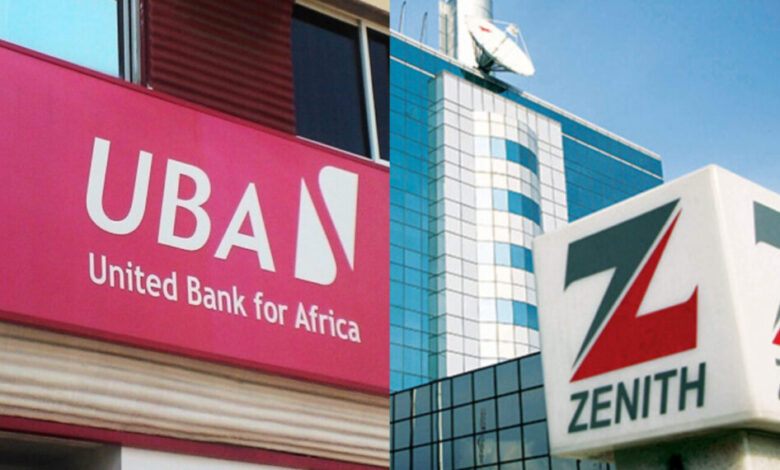
In the competitive world of Nigerian banking, Zenith Bank and United Bank for Africa (UBA) have consistently demonstrated their prowess in delivering strong financial results. While both banks have shown resilience and adaptability in a dynamic economic environment, a closer look at their half-year 2025 results reveals interesting differences in their strategies, strengths, and weaknesses.
*Market Performance: UBA’s Long-Term Edge*
UBA’s stock has been a long-term outperformer, with a compound annual growth rate (CAGR) of 86% from 2023 to 2025. This impressive growth trajectory is a testament to the bank’s ability to navigate the complexities of the Nigerian economy and deliver value to its shareholders. In contrast, Zenith Bank’s stock has shown stronger recent momentum, with a 44% return in 2025. This suggests that Zenith is gaining ground, but UBA’s long-term track record gives it an edge in terms of market performance.
*Profitability: Impairment Charges Weigh on Zenith*
When it comes to profitability, Zenith Bank’s pre-tax profit declined by 13.9% to N625.6 billion due to significant impairment charges. This highlights the challenges the bank faces in managing its credit risk. On the other hand, UBA’s pre-tax profit decreased by a more modest 3.3% to N388.4 billion, demonstrating its ability to maintain profitability despite headwinds.
*Interest Income: Zenith’s Strong Lending Yields*
Both banks have benefited from the high-yield environment, but Zenith Bank’s strong lending yields have given it an edge. The bank generated N1.84 trillion in interest income, outperforming UBA’s N1.33 trillion. This suggests that Zenith’s focus on lending has paid off, but UBA’s more conservative approach to lending has helped it keep impairment charges in check.
*Impairment Charges: UBA’s Prudent Approach*
UBA’s impairment charge of N35.2 billion is significantly lower than Zenith’s N760.8 billion. This highlights UBA’s prudent approach to credit risk management, which has helped the bank maintain its profitability. Zenith, on the other hand, needs to address its credit risk challenges to restore its profitability.
*Non-Interest Income: UBA’s Fee-Based Strength*
UBA has demonstrated strength in fee and commission income, generating N253.6 billion compared to Zenith’s N197.4 billion. This suggests that UBA’s focus on digital banking and transaction platforms is paying off. However, Zenith’s trading and FX income of N468 billion dwarfs UBA’s N10 billion loss in the same category.
*Balance Sheet: UBA’s Larger Footprint*
UBA has a larger balance sheet with N33.27 trillion in assets, while Zenith has N30.99 trillion. However, Zenith’s loan-to-deposit ratio of 41% is higher than UBA’s 32%, indicating that Zenith is more aggressive in its lending approach.
*Valuation: UBA’s Value Proposition*
When it comes to valuation, UBA is trading at a price-to-earnings (P/E) ratio of 1.97x and a price-to-book (P/B) ratio of 0.04x, making it a potential value play. Zenith, on the other hand, trades at a P/E of 2.42x and P/B of 0.59x, reflecting its stronger recent performance.
In conclusion, both Zenith Bank and UBA have demonstrated their strengths and weaknesses in their half-year 2025 results. While UBA’s long-term track record and prudent approach to credit risk management give it an edge, Zenith’s strong lending yields and trading income make it a formidable competitor. As the Nigerian banking sector continues to evolve, both banks are well-positioned to capitalize on opportunities and navigate challenges.




